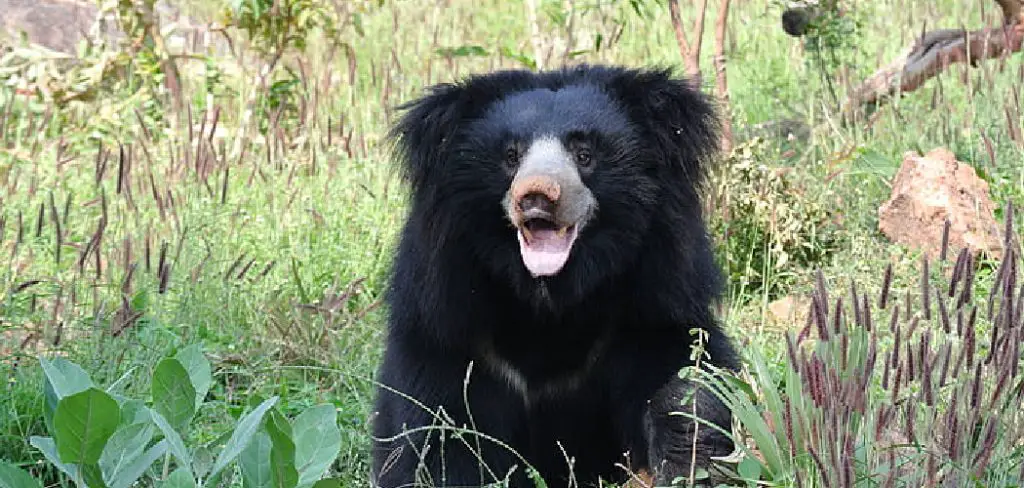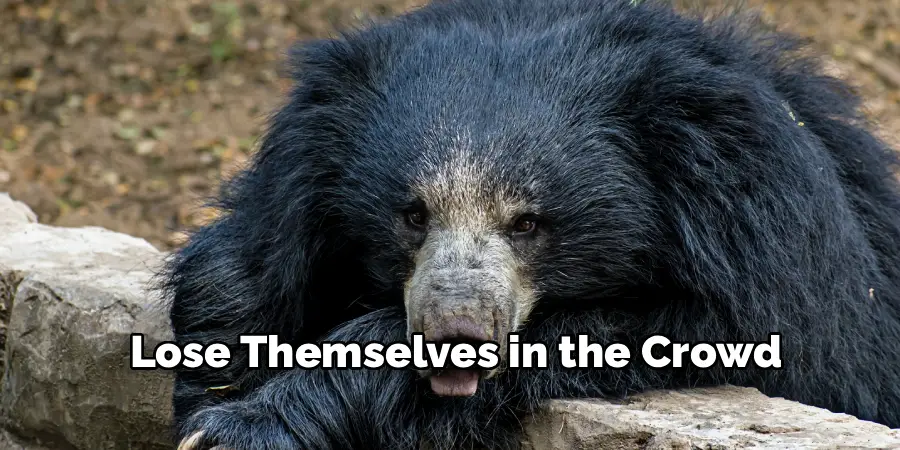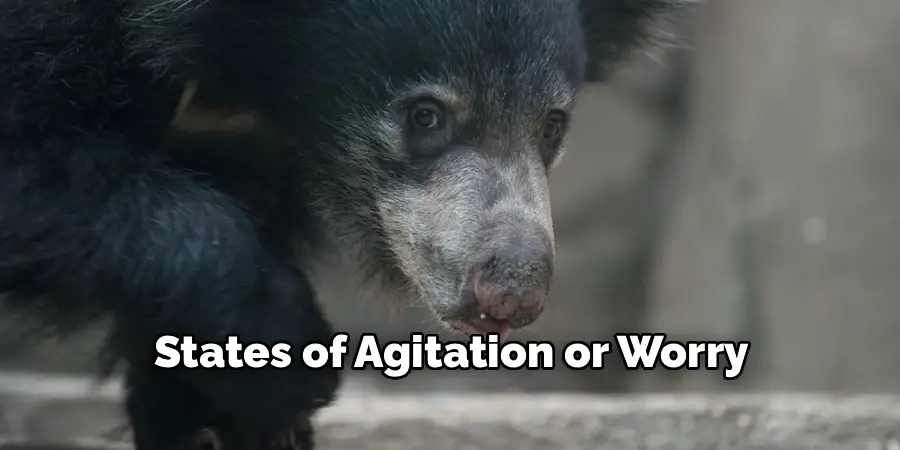The sloth bear, native to the Indian subcontinent, is an often overlooked but remarkable animal, both in its physical traits and its deeper spiritual significance. Distinguished by its shaggy coat, unique lip-sucking feeding style, and an insect-based diet, the sloth bear leads a life vastly different from that of other bear species. Its world—the forests, grasslands, and sometimes the edges of human villages—sets the stage for a creature that thrives on the unconventional.

This article embarks on a grounded, culturally respectful exploration of the Sloth Bear Spiritual Meaning, Symbolism, and Totem, seeking to illuminate what this remarkable animal can teach us on the spiritual journey. We’ll delve into its natural history, examine core spiritual meanings, uncover the lessons it imparts as a totem, interpret dreams and omens, and offer practical ways to draw on its unique energy in daily life.
Natural History and Cultural Context
Range, Diet, and Nocturnal Behavior
Understanding the sloth bear’s physical world is crucial to grasping its spiritual lessons. The sloth bear’s range covers much of India, Sri Lanka, and parts of Nepal and Bhutan, where it prefers forested habitats but can subsist on scrubland and rural edges. Unlike other bears that primarily eat vegetation or fish, the sloth bear’s diet is dominated by insects—especially termites and ants. Its long, curved claws and powerful forelimbs are perfectly adapted for breaking open termite mounds. At the same time, its flexible lips allow it to suck up insects with a loud, unmistakable snuffling sound.
Nocturnality defines much of the sloth bear’s routine. They forage by night, using their acute sense of smell rather than sight to locate food. During the day, they rest in dense vegetation or rocky outcrops, avoiding the heat and potential human encounters. This nocturnal way of life signals a connection with the hidden, the mysterious, and the unseen, foreshadowing later explorations into intuition and subconscious wisdom.
Folklore, Conflicts, and Conservation
Sloth bears appear in folk tales and stories across the Indian subcontinent, sometimes feared and sometimes revered. They are often portrayed as unpredictable and formidable forest dwellers. Human-bear conflicts have long colored their reputation, particularly as expanding agriculture and human settlements bring more encounters, which can turn dangerous for both sides.

Conservation efforts are crucial, as the sloth bear’s population faces threats from habitat destruction, poaching, and historic practices such as bear dancing. While their vulnerable status has prompted stronger legal protections and rescue missions, ensuring their future will require compassion, understanding, and a willingness to coexist.
Unique Traits: Shaggy Coat, Lip-Sucking, and Claws
A closer look at the sloth bear’s body explains both its spiritual and material symbolism. Its disheveled appearance, with long, black, unkempt fur and a mane around the neck, provides camouflage and deterrence. Its lips, highly mobile and almost trunk-like, are specialized for a life of foraging—both an emblem of creative problem solving and an invitation to seek nourishment in unexpected ways. Meanwhile, long, sickle-shaped claws make it a skilled excavator, expressing persistence and the ability to unearth hidden sustenance.
Sloth Bear Spiritual Meaning
Persistence, Precision, and Unconventional Paths
One of the primary teachings of the sloth bear is that there is value in persistence and ingenuity, even if the approach appears unorthodox. The animal’s relentless pursuit of food beneath the surface—whether termites, ants, or tubers—serves as a powerful metaphor for finding what we need in unexpected places. Those drawn to sloth bear energy may discover that taking roundabout or nontraditional paths is often the key to reaching their goals.
Night Work, Senses, and Inner Guidance
Living largely in darkness and relying more on smell and hearing than sight, sloth bears dwell in the realm of the unseen. Spiritually, this links them to intuition, dream work, and inner vision. People who resonate with the sloth bear may feel most comfortable trusting their gut over logic, finding answers in dreams, or working productively during unconventional hours. The bear encourages all of us to develop our “other senses”—to listen deeply, feel our way forward, and embrace the lessons that come during times of quiet or solitude.
Protection, Boundaries, and Fierce Care
Despite their generally shy disposition, sloth bears can be unexpectedly fierce when threatened, especially mothers with cubs. This is not aggression for its own sake, but an expression of deep protective instinct. Spiritually, this energy calls for strong boundaries and a willingness to stand up for what matters, rather than let others overstep or threaten your peace. In a world where so many give in to pressure or lose themselves in the crowd, the sloth bear totem reminds us to defend what’s important—sometimes fiercely—when necessary.

Symbolism Across Traditions
Indian Stories and Villages on the Edge
The sloth bear’s mystical reputation persists in the folklore of India’s villages, which often sit on the edge of forest territory. Stories commonly depict the creature as an unpredictable guest—capable of kindness but also danger if disrespected. As a result, it serves as a spiritual bridge between the human world and untamed nature, representing respect for boundaries and for the wildness within ourselves.
Forest Hermit Archetypes and Renunciation
There is a strong parallel between the sloth bear’s solitary, nocturnal lifestyle and the archetype of the hermit or ascetic in Indian tradition. These spiritual figures withdraw from society to seek hidden wisdom, moving through the world quietly and attentively. Like the bear, they rely on internal rather than external guidance and seek treasures not immediately visible to the untrained eye.
Comparisons with Other Insect-Eating Archetypes
Across cultures, creatures with a specialized diet or unusual adaptations—such as anteaters and aardvarks—are often seen as keepers of hidden knowledge or guardians of secrets. The sloth bear’s focus on insects and its peculiar lifestyle similarly signify the rewards of diligent search and the value of what others might overlook or discard.
Sloth Bear as a Totem Animal
Life Lessons: Focus, Skill, and Stamina
If the sloth bear appears as your totem or spirit guide, expect lessons that center on focus, craft, and the ability to endure. The bear’s specialized skills, honed over millennia, support its survival in a demanding environment. Spiritually, this translates into the importance of mastering your craft, trusting in your unique approach, and sustaining your effort even in the face of setbacks.
Gifts: Sensitivity, Stillness, and Discernment
The sloth bear’s heightened sensory perception is mirrored in its spiritual gifts. This totem brings those who walk with it a greater awareness of subtle cues—whether emotional, energetic, or environmental. It encourages periods of stillness and reflection, allowing you to connect more deeply with yourself and with your surroundings. With discernment comes clarity about what truly nourishes you, physically and spiritually.
Challenges: Irritability, Overreaction, and Isolation
Like any totem, the sloth bear also highlights potential pitfalls. If out of balance, its energy can foster irritability or an exaggerated response to minor threats, leading to unnecessary conflict or withdrawal. There is also a risk of excessive isolation, a tendency to retreat too far from community or support. Awareness of these shadows helps turn them into opportunities for growth—inviting us to channel protection, not aggression, and to maintain connection even in solitude.
Omens, Signs, and Synchronicities
Tracks, Scratches, and Night Sightings
Those seeking messages from the sloth bear may notice signs that appear subtle, even cryptic. Track sightings, scratch marks on trees, or even rare nocturnal encounters are not simply curiosities—they may serve as reminders to dig deeper for answers or to pay attention to life’s less visible undercurrents.

Wind, Smell, and Sound Messages
Sloth bears rely on smell and hearing as their primary senses. For us, this can suggest listening for messages carried not just in words, but through hints, whispers, and feelings in the air. When ordinary avenues of understanding seem blocked, this bear encourages us to trust what we perceive through intuition, the sense of “knowing,” or what is felt rather than seen.
Colors, Numbers, and Elemental Links
The sloth bear is closely associated with the earth: its dark coat, a symbol of the mysterious, the grounded, and the fertile unseen. In numerology, sightings or dreams involving pairs or trios may symbolize family, protection, or teamwork, echoing the relationship between mothers and cubs. Rooting yourself in earth element practices—gardening, cooking, grounding meditations—can deepen your connection to its teachings.
Dreams and Meditative Encounters
Foraging at Night: Hidden Nourishment
To dream of a sloth bear foraging in darkness is an invitation to seek what you need below the surface. This could be a prompt to pursue creative projects that seem unconventional, hunt for solutions where others see none, or trust that your path, though hidden, will bring nourishment.
Mother and Cub: Protection and Teaching
A dream or vision of a mother sloth bear carrying her cub is a powerful image of protective love and guidance. It may relate to a need for nurturing, the importance of teaching others (or yourself) vital skills, or the reassurance that you are cared for, even if not always overtly.
Termite Mounds, Trees, and Safe Retreats
Dreaming of termite mounds or seeking refuge in trees alongside the bear points to the value of safe spaces and hidden sources of energy. These dreams suggest that protection, healing, and renewal are possible when you honor your need for retreat and carefully choose your battles.
Shadow Work with the Bear
Irritation, Anxiety, and Nervous System Care
Interacting with the shadow side of the sloth bear means working gently with states of agitation or worry. The bear’s natural vigilance can tip into unease if not balanced. Cultivate calm through breathing exercises, mindfulness, and time in nature. Practices that mimic the sloth bear’s slow, repetitive motions—like mindful eating, walking, or body scans—help soothe an overactive mind.

Self-Protection Without Aggression
One of the sloth bear’s most powerful lessons is the ability to protect oneself without overreacting or escalating conflict. Learning to set clear, calm boundaries—whether emotional, professional, or spiritual—fosters resilience and preserves relationships without resorting to unnecessary aggression.
Repatterning Routine and Rest
The rhythm of the sloth bear’s life—a blend of intense activity and deep rest—offers a model for modern living. If you find yourself stuck in a cycle of overwork or insomnia, consider introducing routines that alternate bursts of effort with deliberate downtime. Night-focused meditation, regular bedtime rituals, and grounding self-care routines can be particularly healing.
Practical Rituals and Offerings
Forest Altars and Ethical Offerings
Creating a sacred space inspired by the sloth bear’s forest home can heighten your connection to its energy. Include pieces of bark, leaves, or other forest elements (collected respectfully) on a small altar. Ethical offerings might involve supporting conservation funds instead of gifts left in the wild—a practice that honors the spirit of the bear while protecting its material needs.

Herbs, Stones, and Colors for the Sloth Bear
Grounding herbs like vetiver, sandalwood, or patchouli can help foster the bear’s earthy energy. Stones such as black tourmaline and smoky quartz offer protection and stability. Use colors that reflect the bear and its habitat—deep blacks and browns—when designing meditation corners or personal rituals.
Breathwork, Sensory Awareness, and Slow Movement
Simple body-based practices connect you to the sloth bear’s unique gifts. Try slow, rhythmic breathwork, focusing on each inhale and exhale, to mimic the bear’s steady foraging motions. Sensory meditations—paying attention to the smells, sounds, and sensations around you—cultivate presence and intuition. Moving slowly and deliberately, especially in nature, helps anchor the body and spirit in the here and now.
Integrating Medicine into Daily Life
Focused Work Sprints and Rest
The pattern of the sloth bear—concentrating energy on focused activity, then withdrawing for recovery—can be mimicked in our daily lives. Schedule “work sprints” with clearly-defined tasks, followed by intentional rest. Use alarms, breaks, or shifting environments to remind yourself to pause and recharge, preventing burnout and sustaining creativity.
Sensitive Boundaries and Community Care
While the sloth bear is solitary, it also remains alert to the community’s needs—especially when raising cubs or navigating risky encounters. Learn to identify and honor your own boundaries, while also seeking ways to offer protection or support within your circles. Communication, active listening, and small acts of service create community without draining your reserves.
Conservation Support and Education
Integrating the bear’s lessons means translating respect for its spirit into action. Support conservation groups dedicated to protecting the sloth bear and its habitats. Participate in educational outreach to help prevent human-bear conflicts and spread awareness about the species’ plight. By acting locally or contributing to global efforts, you help safeguard a creature that has much to teach our world.

Conclusion
The sloth bear stands as a symbol of persistence, subtle power, and unconventional wisdom—qualities increasingly vital in a fast-changing world. By honoring the Sloth Bear Spiritual Meaning, Symbolism, and Totem, we are reminded of the value of forging our own path, listening to intuition, and fiercely guarding what we hold dear. This gentle but formidable animal encourages us not only to seek nourishment in unexpected places but also to foster boundaries that both protect and connect. In respecting the sloth bear—through mindful living, ritual, and conservation—we honor the sacred wild within and beyond ourselves, ensuring a future in which its lessons remain alive for generations to come.
You Can Check It Out To Blanford’s Fox Spiritual Meaning.
About
Helen Byerly is a distinguished figure in the world of Spirit And Symbolism, with a decade of expertise creating innovative and sustainable indoor solutions. His professional focus lies in merging traditional craftsmanship with modern manufacturing techniques, fostering designs that are both practical and environmentally conscious. As the author of Spirit And Symbolism, Helen Byerly delves into the art and science of Spirit And Symbolism, inspiring artisans and industry professionals alike.
Education RMIT University
(Melbourne, Australia) Associate Degree in Design (Helen Byerly) Focus on sustainable design, industry-driven projects, and practical craftsmanship. Gained hands-on experience with traditional and digital manufacturing tools, such as CAD and CNC software.
Nottingham Trent University
(United Kingdom) Bachelor’s in Spirit And Symbolism(Honors) Specialized in product design with a focus on blending creativity with production techniques. Participated in industry projects, working with companies like John Lewis and Vitsoe to gain real-world insights.
Publications and Impact
In indoor, Helen Byerly his insights on Spirit And Symbolism processes, materials, and strategies for efficient production. His writing bridges the gap between artisan knowledge and modern industry needs, making it a must-read for both budding designers and seasoned professionals.
